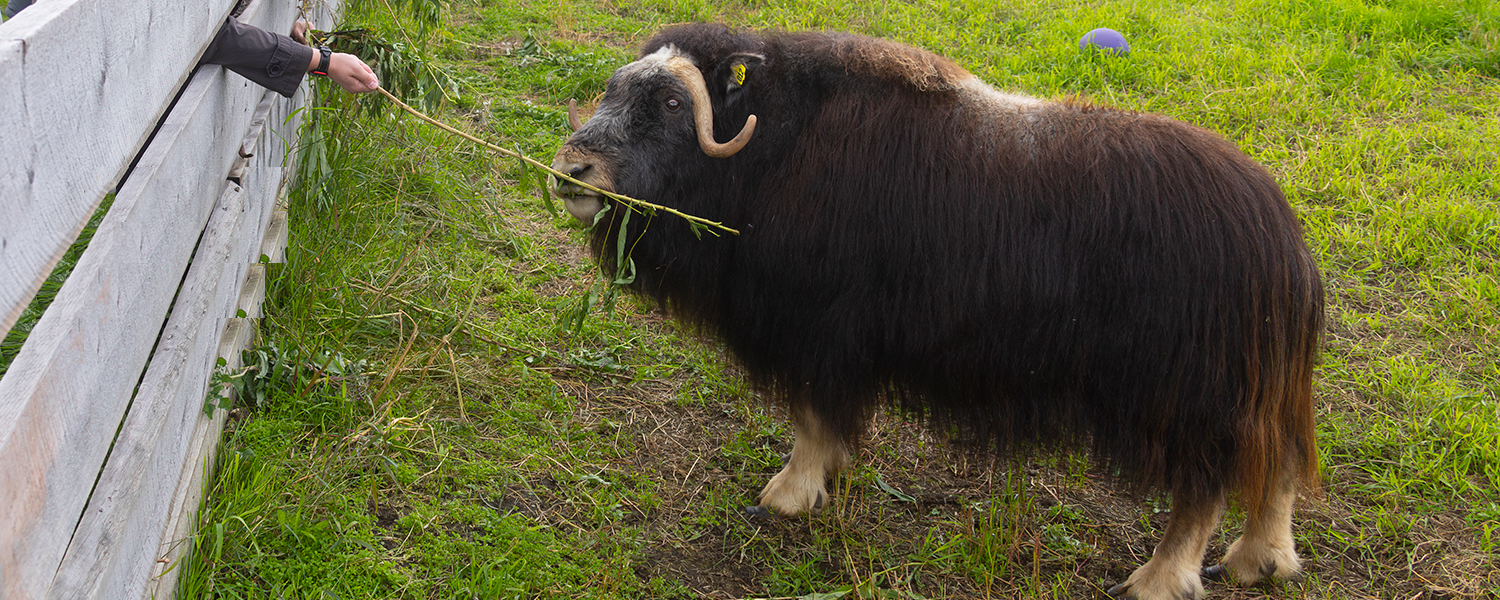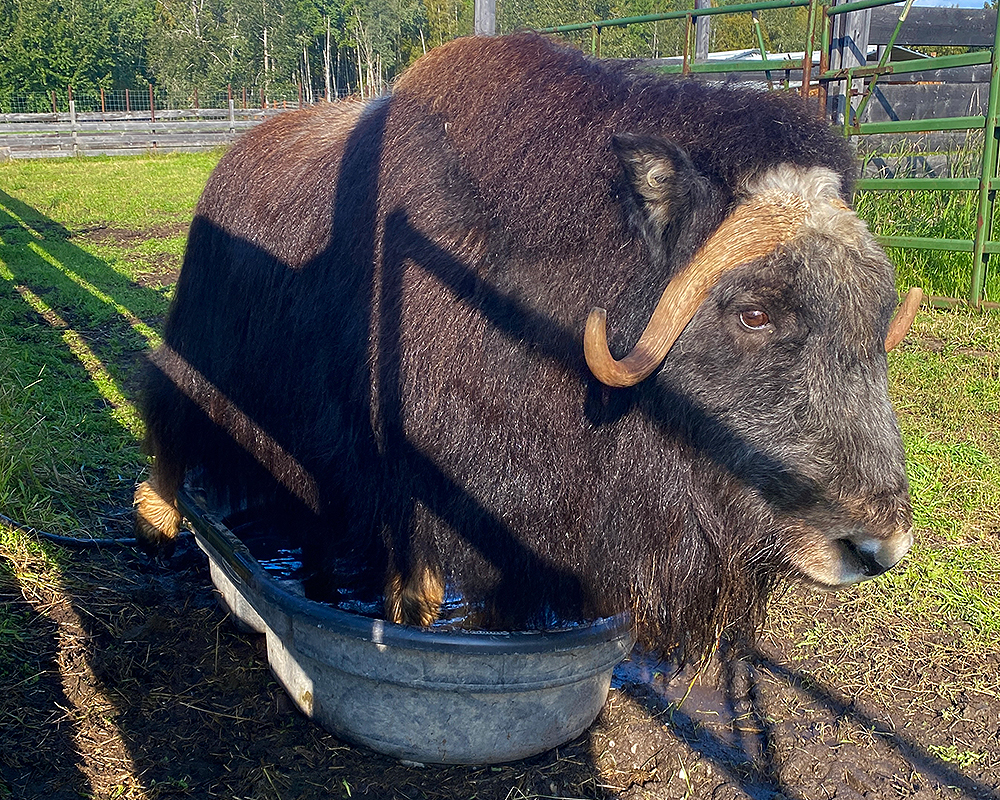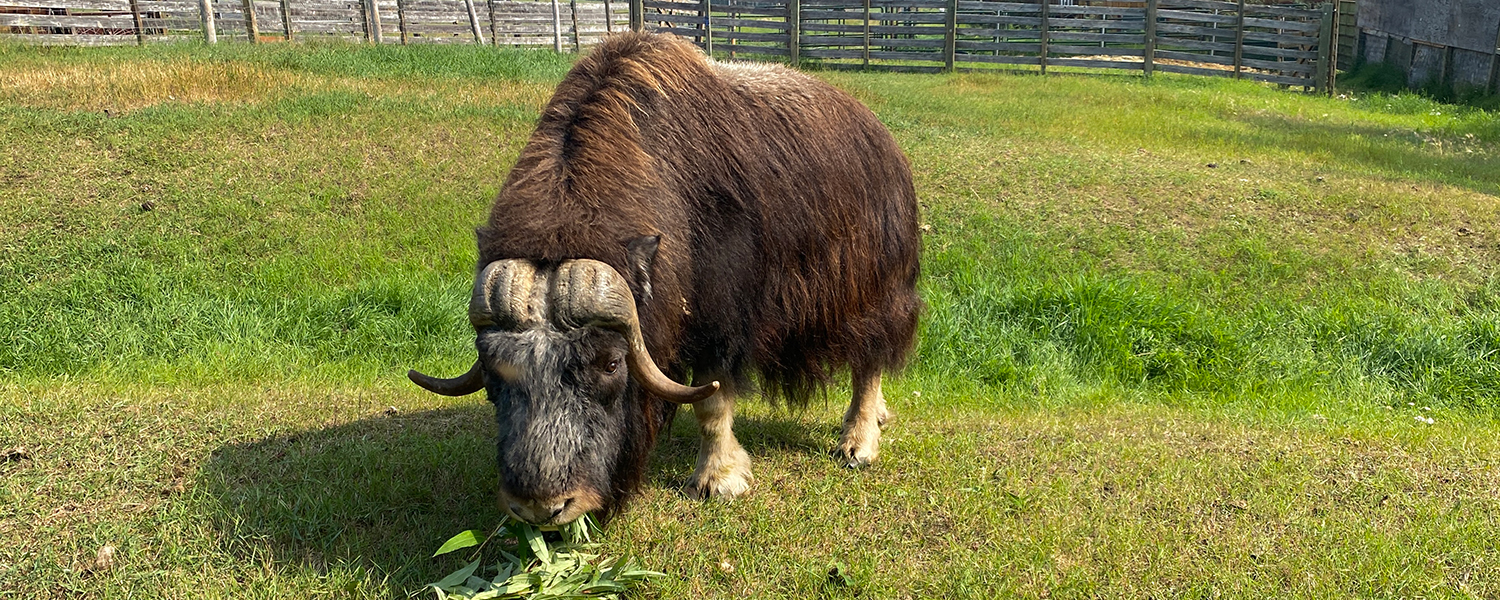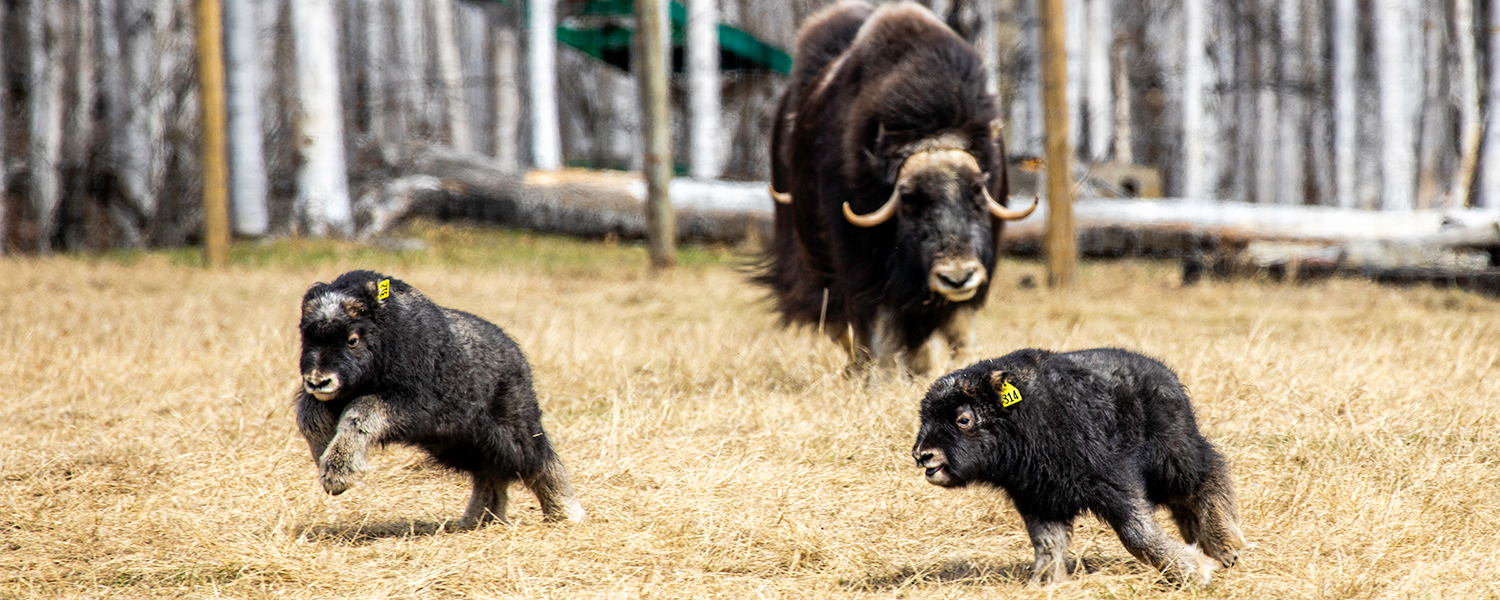Muskoxen
An Ice Age relic, muskoxen (Ovibos moschatus) have been wandering the Earth for over 600,000 years. They roamed the tundra with sabertooth tigers, woolly mammoths, and other long extinct megafauna. Muskoxen are even- toed ungulates (artiodactyla) and members of the Bovidae family. Although they may visually resemble some kind of ox or bison, they belong to the caprinae sub-family, making them more closely related to sheep and goats then cows or bison.
Historical Timeline
Physical Description
Muskoxen are large barrel shaped creatures that are highly adapted to living in the Arctic environment. Their coat consists of two types of hair: guard hair and qiviut. The guard hair is the long, coarse outer hair that helps protect the qiviut. Guard hair is brown to black in color except for in the area of the saddle and legs where it is white. Some muskoxen also have white facial markings. The qiviut is a very soft underwool that insulates by trapping air near their body. Qiviut is shed annually and can be harvested and spun into a fine yarn.
Muskox Stats
Male:
- Weight: 300-400 kg
- Height: 120-152 cm
- Length: 200-250 cm
- Life Span:10 -12 (wild)
- Sexual Maturity: 3-4 years
Female:
- Weight: 180-275 kg
- Height: 120 cm
- Length: 135-200 cm
- Life Span: 15-18 (wild)
- Sexual Maturity: 1-3 years


Reproduction
Muskoxen are harem breeders, with males fighting for dominance in order to breed multiple females in a group that they defend during the breeding season. Their breeding season, also known as “rut”, starts mid-August and runs to mid-September, with calves born in the April/ May time frame. The gestation is about 8 months, and they typically will have one offspring. Newborn calves weigh between 9 and 11 kg. Twinning is very rare but does occur. LARS had a set of muskox twins born over 7 years ago. They are the oldest known surviving set of twins to date.
Diet
As a true ruminant, muskoxen have a four chambered stomach that allows them to process grasses and roughage. They are considered generalized grazers eating both grasses and browse. Their diet changes based on the season. During the summer, they consume mostly leafy plants, grasses, and sedges, and in the winter they eat more browse, lichen, moss, and even roots of plants.


Behavior and Communication
Wild muskox herds consist of males and females of all ages. A hierarchy is established within the herd using both verbal and non-verbal communication. Males will fight amongst each other by charging full speed towards each other and hitting horn boss to horn boss. These fights can last through multiple collisions before one male surrenders and runs away. Other non-verbal communication includes stomping, snorting, head swinging, and even subtle head turns.
Calves will verbally communicate by bleating at their mother. Their voices get deeper as they mature. As adults, muskoxen verbalize in a roar or purring sound. This is usually only heard during calving and mating season.
